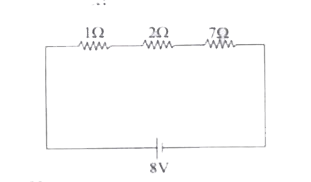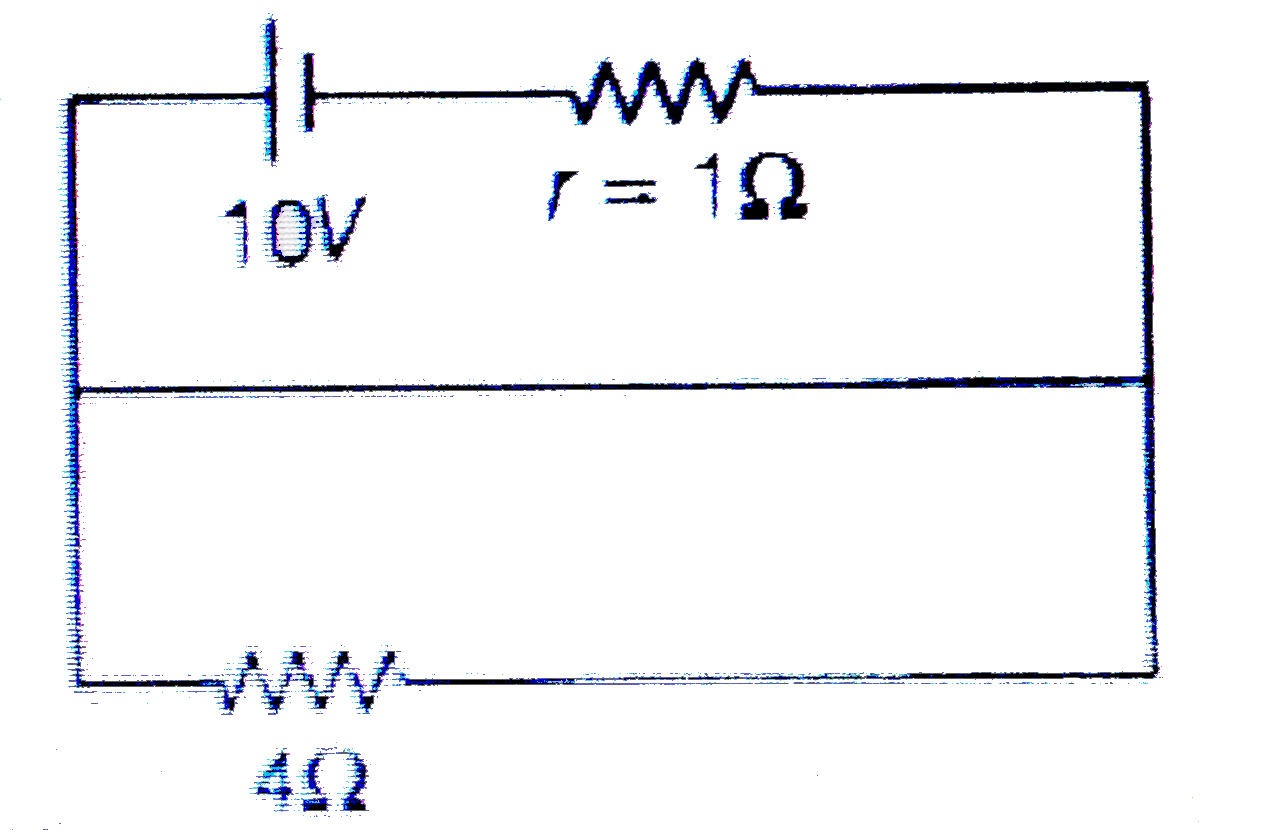How will you conclude that the same potential difference (voltage) exists across three resistors connected in a parallel arrangement to a battery ?
If we connect a voltmeter first across R1, then across R2 and lastly across R3, it will show same voltage (pd).
Topper's Solved these Questions
- BOOK - PRADEEPCHAPTER - ELECTRICITYEXERCISE - (Additional)Very Short Answer47videos
ELECTRICITY
- BOOK - PRADEEPCHAPTER - ELECTRICITYEXERCISE - (Additional)Short Answer36videos
ELECTRICITY
- BOOK - PRADEEPCHAPTER - ELECTRICITYEXERCISE - (Exemplar)Short Answer10videos
ELECTRICITY
- BOOK - PRADEEPCHAPTER - MAGNETIC EFFECTS OF ELECTRIC CURRENTEXERCISE - Mock Test21videos
MAGNETIC EFFECTS OF ELECTRIC CURRENT
Similar Questions
The potential difference across the 3 resistor shown in figure is
 View Solution
View SolutionA 2.0μF capacitor and a 4.0μF, capacitor are connected in parallel across in 300V potential difference (a) What is the total energy stored by them? (b) They are next connected in series across that potential difference. What is the ratio of the total energy stored by them in the parallel arrangement to that in the series arrangement?
View Solution
Knowledge Check
- Question 1 - Select One
What is the potential difference across resistor in the given circuit ?
 A80VB0VC32VD16V
A80VB0VC32VD16V - Question 2 - Select One or More
Potential difference across the terminal of a non ideal battery is
Azero when it is short circuitedBless than its emf when current flows from negative terminal to positive terinal inside the batteryCzero when no current is drawn from the batteryDgreater than its emf when current flows from positive terminal to negative terminal inside the battery - Question 3 - Select One
Potential different across the terminals of the battery shown in figure is
 A8 VB10 VC6 VDzero
A8 VB10 VC6 VDzero
Draw a circuit diagram of an electric circuit containing a cell, a key, an ammeter, a resistor of 2Ω in series with a combination of two resistors (4Ω each) in parallel and a voltmeter across the parallel combination. Will the potential difference across the 2Ω resistor be the same as that across the parallel combination of 4Ω resistors? Give reason.
View SolutionDraw a circuit diagram of an electric circuit containing a cell, a key, an ammeter, a resistance of 2Ω in series with a combination of two resistors (4Ω each) in parallel and a voltmeter across the parallel combination. Will the potential difference across the 2Ω resistor be the same as that across the parallel combination of 4Ω resistors ? Give reason.
View SolutionDraw a circuit diagram of an electric circuit containing a cell, a key, an ammeter, a resistance of 2Ω in series with a combination of two resistors (4Ω each) in parallel and a voltmeter across the parallel combination. Will the potential difference across the 2Ω resistor be the same as that across the parallel combination of 4Ω resistors ? Give reason.
View SolutionAn inductor is connected in series with a resistor of resistance 1000 Ω and a capacitor of capacitance 2 μF. Potential difference of 100 V exists across the resistor . Angular frequency of source is 200 rad/s, and the same is equal to resonant frequency of the circuit find the rms voltage across inductor .
View SolutionA voltmeter having a resistance of 1800Ω employed to measure the potential difference across a 200Ω resistor which is connected to the terminals of a dc power supply having an emf of 50 V and an internal resistance of 20Ω. What is the percentage decrease in the potential difference across the 200Ω resistor as a result of connecting the voltmeter across it?
View Solution

